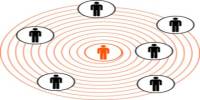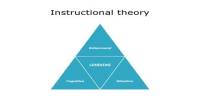When people listen to music, they pay close attention to the sounds. But what is it about music that keeps people interested? A recent study breaks new ground in the study of neural responses to music. The researchers used electroencephalography (EEG) to measure brainwave synchronization while an audience of musicians and non-musicians listened to familiar and unfamiliar excerpts of instrumental classical music.
A brainwave spectral analysis based on electroencephalogram findings is a powerful tool for gaining deep and objective insights into the effects of music on the brain. This capability is being researched in a variety of contexts. Beginning with a healthy population, studies seek to determine the impact of music in conditions such as consciousness disorders, psychiatric diseases, and chronic conditions, as well as to further investigate the role of music in rehabilitation.
Music has the power to captivate us; when we listen to music, we closely follow its sounds, connecting to what we hear in an affective and invested way. But what is it about music that keeps people interested? A study led by City College of New York and the University of Arkansas researchers breaks new ground in understanding the neural responses to music.
What’s so cool about this is that by measuring people’s brainwaves, we can study how people feel about music and what makes it so special. Listeners tend to enjoy a piece more and more as they hear it again and again, until they reach a point where their liking diminishes with further repetitions.
Jens Madsen
When we want to keep time with a difficult piece of music, many of us naturally tap our feet. However, New York University researchers discovered that this physical technique is only one example of how our bodies naturally interpret tunes. Deep within our skulls, two types of low-frequency brain waves, delta, and theta, synchronize with the music we’re listening to. These cortical brain rhythms assist us in processing the piece; in conversation, they perform a similar function, breaking down syllables, words, and phrases so that we can understand what someone is trying to tell us.
Despite its importance, studying music engagement has been difficult due to the limitations of self-report. Jens Madsen and Lucas Parra of CCNY’s Grove School of Engineering were inspired to measure brainwave synchronization in an audience. When a listener is engaged with music, their neural responses are in sync with the neural responses of other listeners; thus, inter-subject correlation of brainwaves is a measure of engagement.
According to their findings, which were published in the most recent issue of “Scientific Reports,” a listener’s engagement decreases with music repetition, but only for familiar music pieces. Unfamiliar musical styles, on the other hand, can hold an audience’s attention, especially for those with some musical training.

“Across repeated exposures to instrumental music,” Parra and his colleagues write in “Scientific Reports,” “inter-subject correlation decreased for music written in a familiar style.” Furthermore, participants with formal musical training demonstrated greater inter-subject correlation, which was sustained across exposures to music in an unfamiliar style. This distinguishes music from other domains in which interest dwindles with repetition.
Magnetoencephalography, which measures tiny magnetic fields inside the brain, was used by the researchers to identify the musical synchronisation. They discovered that musicians were better at synchronizing with unusually slow pieces of music than non-musicians in a group that included both musicians and non-musicians. The difference, according to the team, can be attributed to these individuals’ ability to process tracks as both melodies and individual notes.
They are also better equipped than non-musicians to detect pitch distortions, which are then replicated and synced via cortical brain rhythms. As a result, researchers believe that our brains can be trained to make better use of these innate and involuntary audio-detection systems.
“What’s so cool about this is that by measuring people’s brainwaves, we can study how people feel about music and what makes it so special.” Madsen says.
Among the other researchers were Elizabeth Hellmuth Margulis and Rhimmon Simchy-Gross of the University of Arkansas. Sixty graduate and undergraduate students from City College of New York and the University of Arkansas participated in the study.
In their recent paper, Madsen and his co-authors address the real-world phenomenon of overplayed songs through a more academic lens: “A large body of research in psychoaesthetics traces the inverted-U shaped curve in ‘hedonic value’ (which might be thought about as some kind of composite of enjoyment, interest, and attentiveness) across multiple exposures to a particular stimulus — especially a piece of music.” Listeners tend to enjoy a piece more and more as they hear it again and again, until they reach a point where their liking diminishes with further repetitions.”
















